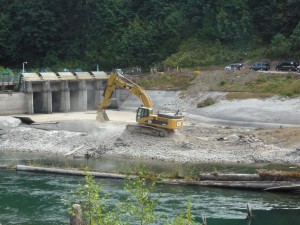Deteriorating dam infrastructure is a “dam” shame. Listen up:
Let’s face it: no dam lives forever. Many of the nation’s estimated 75,000 dams have been providing important services like hydropower or irrigation since the early 1900s—and their time for removal or serious repair has come.
How do such sturdy structures crumble in the first place? Bill Sturtevant, a Wisconsin state dam safety engineer, explains that over time, the dam’s concrete portions deteriorate, its steel rusts out, and its embankments become weakened.
He also says these old dams can have a negative impact on the environment.
“Any dammed river, stream [or] creek will have the effect of warming up the water as it sits in the impoundment, and increasing phosphorus loads and other nutrients,” Sturtevant points out.
Don’t break out the hammer and nails just yet, though. Dam removals or repairs must be done carefully (aka by dam engineering pros) to avoid unintended consequences downstream.
Get schooled:
- Check out American Rivers info on how dams are removed
- Get the facts about hydropower from NYS Department of Environmental Conservation
- Learn about the infrastructure of your state via American Society of Civil Engineers
The fine print:
- This segment was produced in partnership with Cornell’s Atkinson Center for a Sustainable Future





